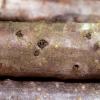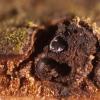
04-02-2015 14:24
Hi to all I need your help again with this pyreno

03-02-2015 20:51
 Miguel Ángel Ribes
Miguel Ángel Ribes
Hi againAnother Hymenoscyphus, 2-3 mm, stalked, on

03-02-2015 18:35
 Miguel Ángel Ribes
Miguel Ángel Ribes
Good eveningThis small white-pale yellow, 1-2 mm,

03-02-2015 18:17
 Blasco Rafael
Blasco Rafael
Hola, TENGO ESTAS Pequeñas Muestras Recogidas en

02-02-2015 16:03
 Bernard Declercq
Bernard Declercq
Hi,does anyone has following paper for me:DiCosma

27-01-2015 15:44
Martin PastircakHi to all, I would appreciate if someone has this

02-02-2015 01:04
 Miguel Ángel Ribes
Miguel Ángel Ribes
Good nightI have this small 1-2 mm broad light vio

02-02-2015 13:37
Gernot FriebesHi,I would need your help with this Lasiosphaeria-

01-02-2015 19:06
Tengo una Muestra de Creo Que de Phycomyces, encon
I need your help again with this pyrenomycete growing on still attached branches of Castanea sativa near the sea. Unfortunately I can't to study well the perithecial walls and periostiolar region because the stromata are not well preserved. In fact I could not have observed the existence of a quellkörper of another stromatic structures.
Asci + or – long stipitate and polysporic. Maybe they have 64 hyaline, cylindrical, allantoid, multiguttulate ascospores, 9.6-12.8 x 2.8-3.3; Q = 3.26-4.62, that seem have a dextrinoid region near the middle.
I don't know if this fungus could be a Cryptosphaerella (close to C. globosa), a Coronophora species or it belongs to another genus in Coronophorales.
Have you some idea?
Thanks again




